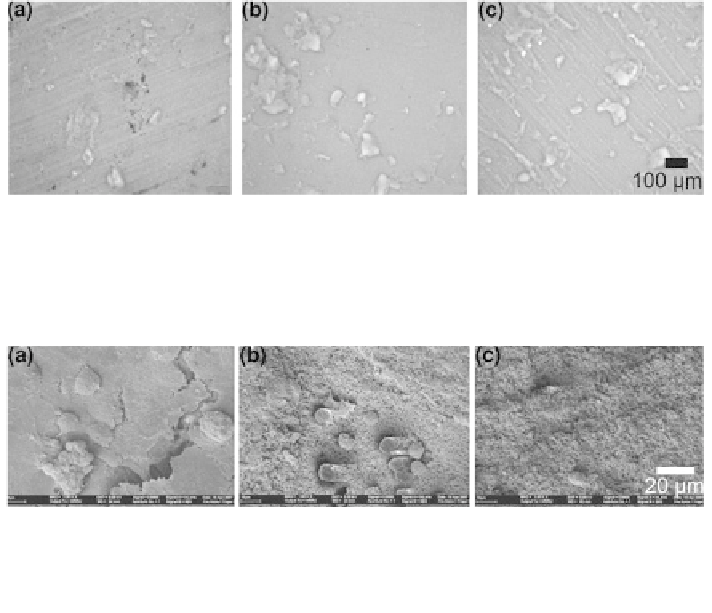Biomedical Engineering Reference
In-Depth Information
Fig. 7 InfiniteFocus images of commercial grade Sponceram HA
a as received, b after surface
polishing using plain paper and c using polymer sheet as grinding tools (adapted from Wiegandt
et al. [
60
])
Fig. 8 SEM pictures of a cell layer grown on modified carrier surfaces: a cell layer on the rough
and inhomogeneous carrier as received, b cell layer on the smooth carrier polished using plain
paper, c cell layer on the structured carrier polished using polymer sheet (adapted from Wiegandt
et al. [
60
])
Expanded dedifferentiated chondrocytes were seeded onto carriers with modi-
fied surface structures for proliferation. The formation of a cell layer was visu-
alized by scanning electron microscopy after 2 weeks of cultivation. While the
untreated carrier showed a closed cell layer, only a low number of cells is visible
on top of the modified surfaces (Fig.
8
). In particular, 200,000 cells were seeded in
all three samples. After two weeks, 290,000 ± 40,000 cells were detected on the
substrate as received, whereas on the polished samples the cell number was below
the detection limit. Thus, no great expansion was observed and, as a consequence,
on the polished surface cell deaths even occurred.
Next, cartilage-carrier constructs as described above were prepared using
carriers with the different surface structures. The adhesive strength between carrier
and tissue was estimated by applying subjective values, detaching cartilage from
the biomaterial with the help of tweezers. The results indicate that the connection
between tissue and biomaterial was weaker for constructs on top of the polished
surfaces than for untreated surfaces. Afterwards, the remaining cells of the carrier
were also stained using DAPI as shown in Table
2
. Five times more cells were
found on top of the untreated carrier than on the polished surfaces. It was assumed
that, in contrast to the modified surfaces, the tissue was disrupted during adhesion
strength estimation because of a strong bond between cartilage and biomaterial.

Search WWH ::

Custom Search